[Solved] Windows PC Shuts Down When Going to Sleep
Jul. 09, 2025 / Updated by Eloise to Windows 10
Have you ever left your computer for a period of time only to come back and find that it has shut down? Have you selected sleep mode, but you can't use the Enter key to wake up the screen unless you restart the computer? This problem can bring a lot of inconvenience to our work. Worse more, this may lead to data loss. In this article, we will walk you through the possible causes and solutions.
Part 1: Why Windows PC shuts down when put to sleep
Part 2: How to fix computer shuts down instead of sleep
Solution 1: Update IMEI drivers
Solution 2: Adjust power and sleep settings
Solution 3: Run the power troubleshooter
Solution 4: Turn off Hibernation
Part 1: Why Windows PC shuts down when put to sleep
We have collected some possible resons why computer shuts down when going to sleep:
Corrupted system files
Outdated drivers
Outdated BIOS
Incorrect power settings
Computer overheating when idle
Part 2: How to fix computer shuts down instead of sleep
Solution 1: Update IMEI drivers
Step 1: Search Device Manager in the search bar and open,
Step 2: Expand the System devices category.
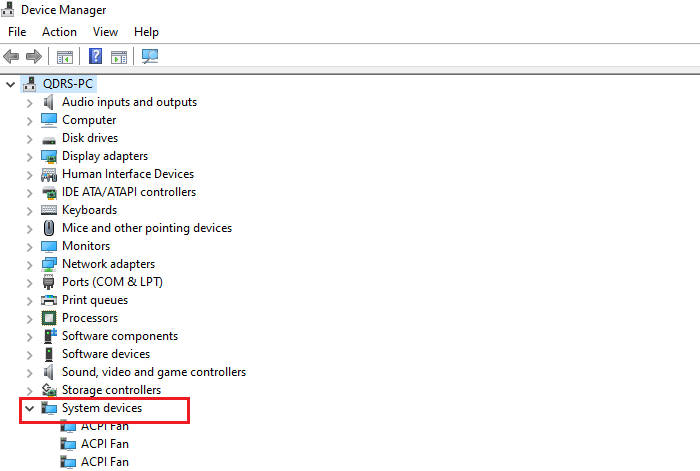
Step 3: Locate the Intel Management Engine Interface device. Right-click on it and select Update driver.
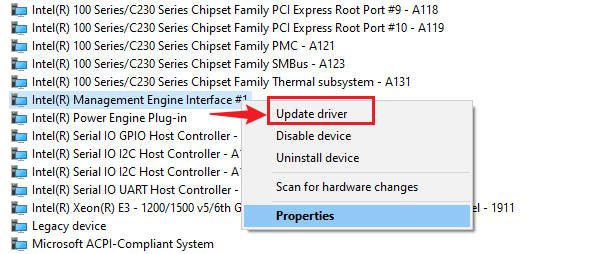
Step 4: Choose Search automatically for updated driver software and follow the on-screen instructions to install the latest driver.
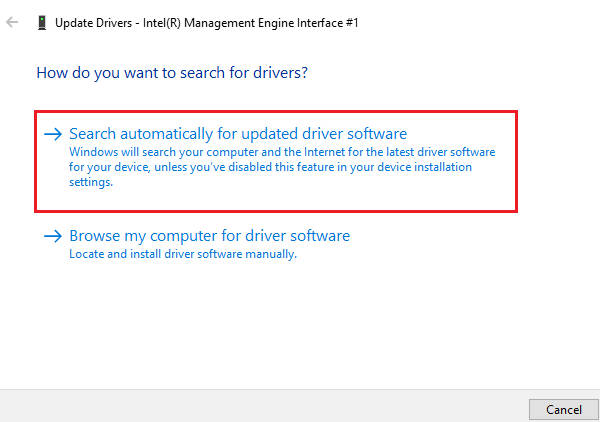
Bonus tip : Update all of your devices drivers to keep your PC performing smoothly
Don’t want to waste time and energy updating each device driver manually? Let Driver Talent handle all the driver updates for you. You don’t have to worry about compatibility issues, Driver Talent will automatically find the best drivers for your devices and install them from official website within minutes. Besides, this tool supports backing up your drivers to a secure location and allow you to restore them in case of system failure, virus attack, or other disasters. It will be the best choice to optimize your drivers and ensure they work well with your hardware and software.
Step 1: Download and install Driver Talent from its official website.
Step 2: Launch Driver Talent and click Scan to scan your computer for any driver problems.
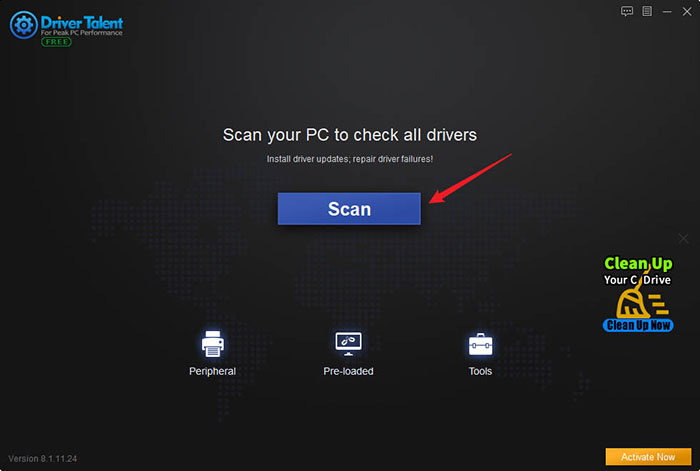
Step 3: After the scan is complete, you will see a list of drivers that need to be updated or installed. Click Install all to automatically install all the lastest drivers for your device.
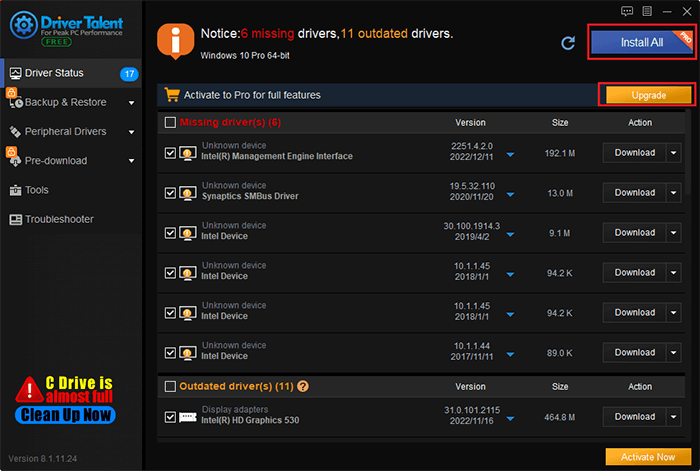
Step 4: Once finished, restart your computer to save changes.
Solution 2: Adjust power and sleep settings
Step 1: Press Windows + I keys to open the Settings app.
Step 2: Select System>Power & sleep.
Step 3: Make sure the settings for When plugged in, turn off after and When on battery power, turn off after are set to Never or a longer time than you prefer.
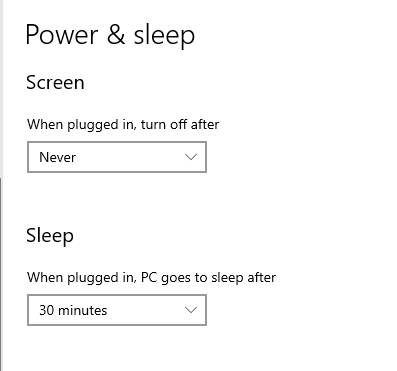
Step 4: Scroll to click Additional power settings to open the Power Options window.
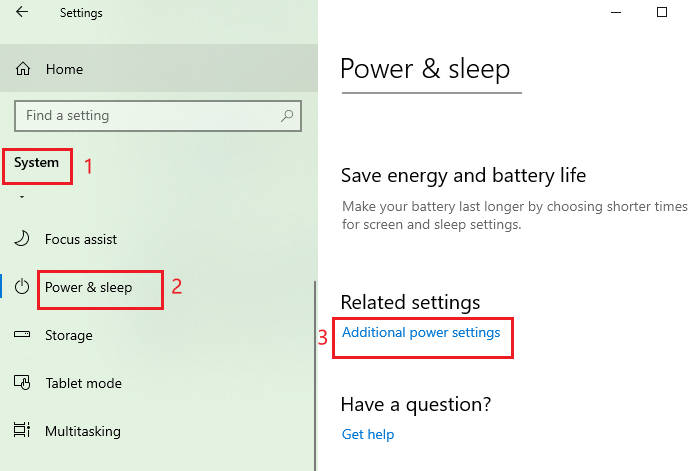
Step 5: Click on Choose what the power buttons do from the left pane.
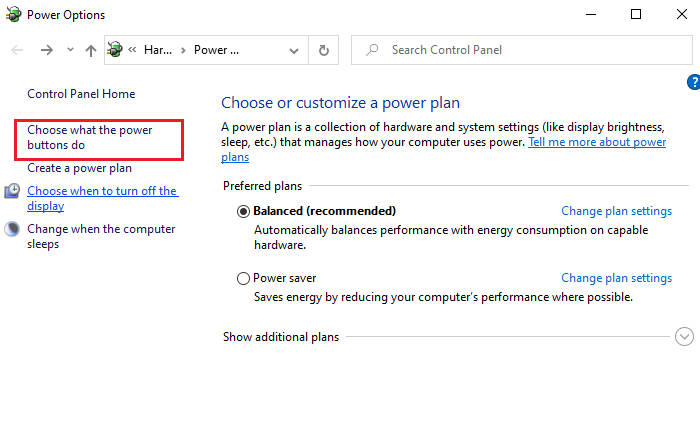
Step 6: Make sure the settings for When I press the sleep button (or "When I close the lid" in laptop) is set to Sleep instead of "Shut down" or "Do nothing".
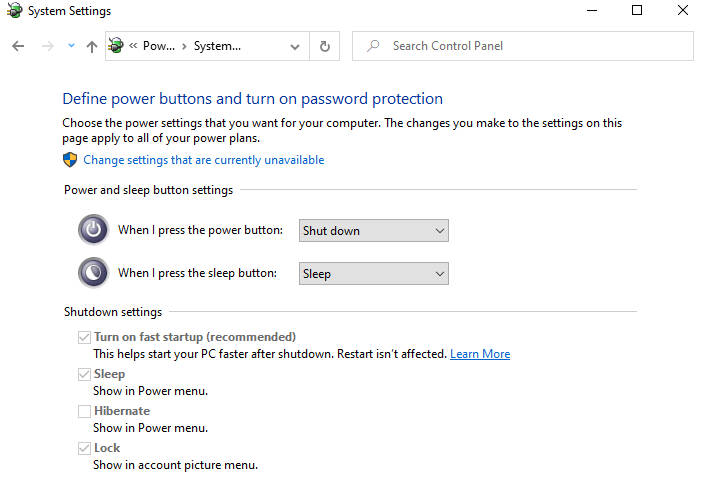
Step 7: Click on Save changes and close the window.
Solution 3: Run the power troubleshooter
Step 1: Search troubleshoot in the search box and open Troubleshoot settings.
Step 2: Under Find and fix other problems, click on Power and then select Run the troubleshooter.
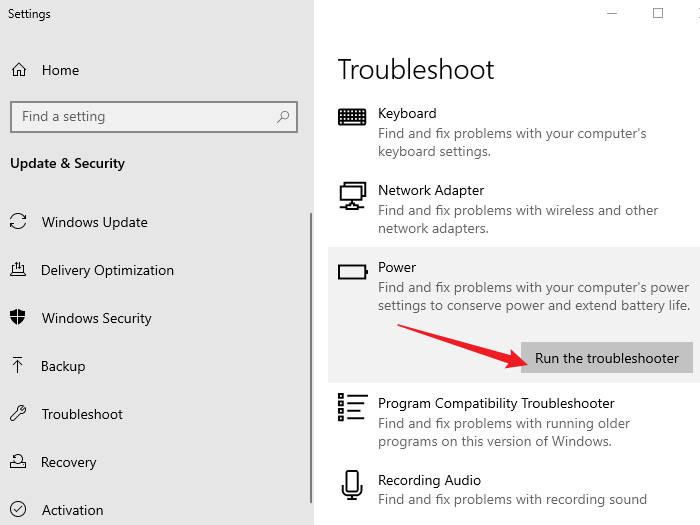
Step 3: Follow the on-screen instructions to complete the troubleshooting process.
Step 4: Restart your computer and check if the problem is fixed.
Solution 4: Turn off Hibernation
Step 1: Press Windows + X keys and select Command Prompt (Admin) or Windows PowerShell (Admin).
Step 2: Type powercfg.exe /hibernate off and press Enter to disable hibernation.
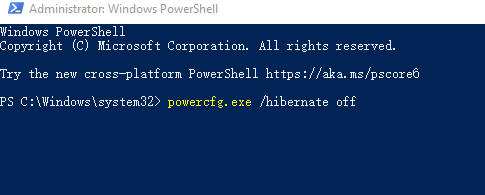
Step 3: Close the window and restart your computer.
Alternatively, you can turn off hibernation in Control Panel, following below steps:
Step 1: Open Control Panel and select Hardware and Sound>Power Options.
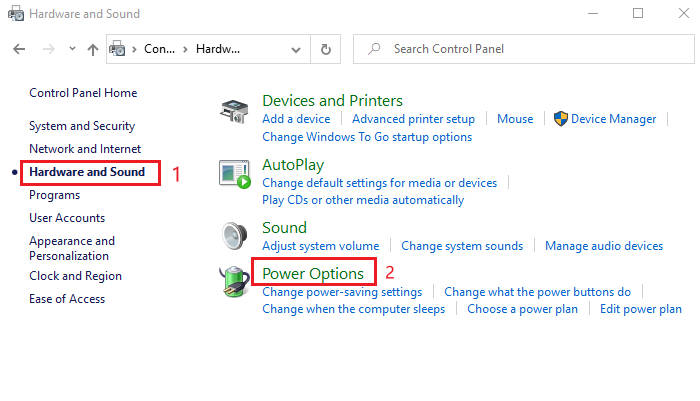
Step 2: Click Change plan settings.
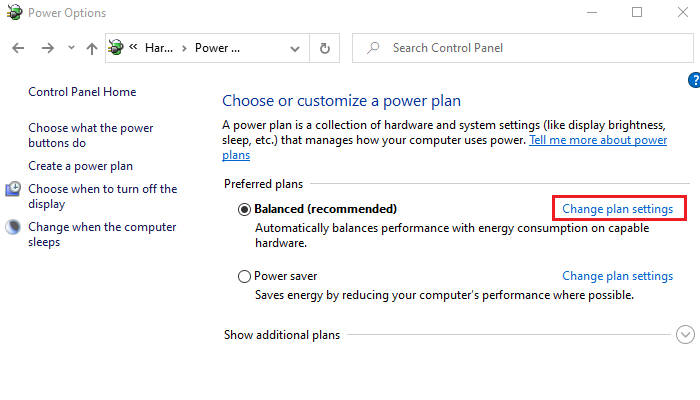
Step 3: Choose Change advanced power settings.
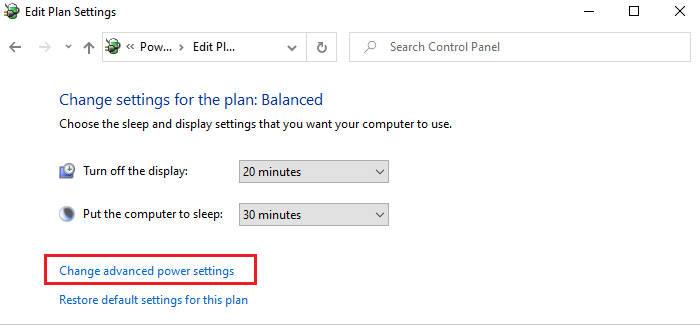
Step 4: Expand Sleep, select Hibernate after andchange status to Never.
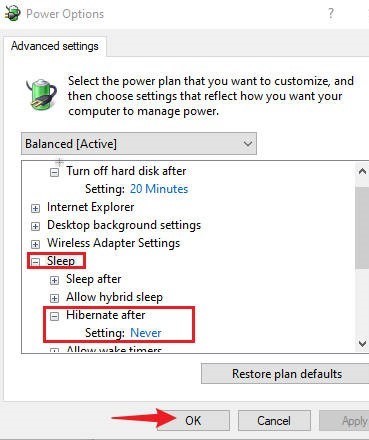
Step 5: Click OK to save changes.
You may also like
Turn on Microsoft Surface from Sleep Crash on Windows 10, 8, 7, Vista, XP
How to Fix Windows 10 Won’t Shut Down after Fall Creators Update

|
ExplorerMax |

|
Driver Talent for Network Card | |
| Smart and advanced file explorer tool for Windows platforms | Download & Install Network Drivers without Internet Connection | |||
| 30-day Free Trial | Free Download |







